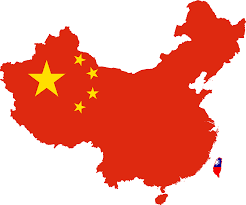Asian stock markets rallied sharply following a pivotal court decision in the United States that struck down a key set of trade tariffs introduced during the Trump administration. The ruling, which limits presidential powers in imposing sweeping trade restrictions, was quickly embraced by investors as a sign of reduced global tension and a potential reopening of trade corridors. Paired with unexpectedly strong earnings from AI leader Nvidia, the momentum delivered an outsized boost to tech-heavy indices across the region.
The U.S. Court of International Trade’s rejection of the so-called “Liberation Day” tariffs marked a decisive moment for international commerce. These tariffs, which had targeted a wide range of imports under the guise of emergency economic powers, were deemed unconstitutional. The market read this development as a rebalancing of authority and a return to more predictable, rules-based trade governance—a welcome signal for exporters and multinational companies throughout Asia.
The market’s reaction was immediate and energetic. Japan’s Nikkei and South Korea’s KOSPI surged nearly 2%, while the Hang Seng in Hong Kong and Shanghai Composite both saw significant gains. Investors were quick to rotate into sectors most impacted by the previous trade frictions, particularly semiconductors, electronics, and software. The broad-based advance reflected not just relief from the legal outcome, but also growing confidence in Asia’s positioning as a tech production powerhouse in a post-tariff environment.
Fuel was added to the fire by Nvidia’s quarterly results, which far exceeded market expectations. The company, long seen as a bellwether for AI development and infrastructure, delivered figures that validated bullish projections on future demand for high-performance computing. This lifted sentiment across global technology stocks, with Asian suppliers and partners of Nvidia riding the wave of optimism. Share prices for key chipmakers and design firms jumped on expectations of heightened order volumes and resilient demand for AI infrastructure buildouts.
In India, major indices also responded positively. The Nifty 50 and BSE Sensex edged higher, led by technology and export-oriented stocks that benefit directly from trade stability and U.S. market access. The broader interpretation was one of re-engagement between global supply chains and U.S. consumer markets, lifting outlooks for growth and earnings in the second half of the year.
Despite the White House lodging an appeal against the court’s decision, the tone among investors was unmistakably bullish. The prospect of a drawn-out legal battle has not shaken confidence, particularly as the judiciary’s stance reinforces checks and balances that limit erratic shifts in trade policy. For now, the markets are celebrating what appears to be a meaningful step toward reduced volatility and enhanced commercial flow.
Investors are also looking ahead to the knock-on effects this could have on monetary policy and capital flows. A less confrontational trade environment may encourage central banks in export-driven economies to maintain accommodative stances, further fuelling equity markets.
Fidelity Asian Values Plc (LON:FAS) provides shareholders with a differentiated equity exposure to Asian Markets. Asia is the world’s fastest-growing economic region and the trust looks to capitalise on this by finding good businesses, run by good people and buying them at a good price.










































